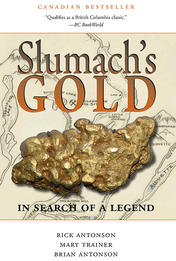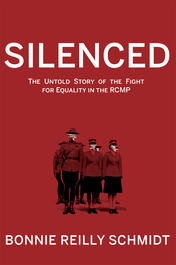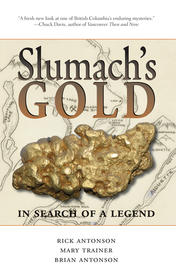Canada

Showing the Flag



Most settlers started with a lean-to shelter. In the nearby forest they felled timber in every direction for more than a tree length, so that the centre of the clearing was beyond the reach of the tallest windfall. In this area they constructed a log cabin. A settler's first cabin was always called Bachelor's Hall. William Duncan's Bachelor's Hall was about where Ypres Street intersects Trunk Road. Other settlers thought it luxurious because the walls were hewn on both sides instead of just one. All cabins were built from plans settlers carried in their heads, but they were remarkably similar. Usually about 3 metres wide and 5 metres long, they were low-walled, built of logs chinked with mud, and capped with a roof of hand-split cedar shakes. At one end was a door with a low lintel and at the other a fireplace built of fieldstone and puddled clay. An iron bar was fixed to the fireplace and from it hung a hook. A large cast-iron pot swung from the hook and into it went venison duck, goose, quail, salmon, trout, edible camas and watercress. Grouse and grouse eggs were a favourite meal. So were beans and bacon-poured over flapjacks they were known as "deadshot." In one corner of the cabin was a shakedown of straw under a three-stripe Hudson's Bay blanket and in another corner was an axe-hewn table graced by two primitive chairs. Between these simple furnishings there was just enough room for a slim man to manoeuvre.
The cabin was the settler's base. Each morning, often before dawn, he emerged to advance his claim. Chores first, then the interminable land clearing. A visitor passing by William Duncan in 1865 or '68 or '72 would have seen the same picture: a man with his shirt sleeves rolled UP, inscribed in the flashing arc of an axe. The forest was the enemy. It had to be beaten back. Settlers in the Duncan area were more fortunate than their high-ground counterparts in that alder and maple covered much of the area. Hardwoods were easier to deal with than conifers. Felled in a pick-up sticks jackpot, they were chopped into lengths. (Functional bucking saws were not available until the 1880s.) The stumps remained in the ground; grass and crops were seeded by hand around them. When the logs on one claim had dried, settlers from surrounding claims arrived to help with the burning. Such events were called work bees and were later remembered as the most enjoyable of settlers' tasks. Men working behind one team of oxen competed with men working behind another team of oxen to see who could build the largest pyre. Afterwards, they feasted on roast pork or beef, freshly slain for the occasion. Then they returned to work their own claims.
A largely solitary life of hard work was dangerous to both spirit and body. A document found at the turn of the century recorded that 25 percent of the deaths in Cowichan in the late 1800s were work-related. According to the Register of Births, Deaths, Marriages and Cattle Brands, many fatalities were from falling trees and branches. Gunshot wounds killed settlers, as did bone-snapping kicks from horses. Even domestic chores were risky: the register's first entry is of a young girl who choked to death on a crabapple; the second is of an infant who died when scalded by hot water. Death came all ways. Historian Elizabeth Norcross tells the story of a young settler who broke his leg. He crawled from his cabin to the junction of two trails where he was found and carried on a stretcher to Cowichan Bay. He was taken by canoe to Saanich and by cart to Victoria. Exhausted from the travelling, he died several days later.
Adorning the settlers' simple life were a few social events, such as St. Peter's Spring Tea or the Cowichan and Saltspring Fall Fair, established in 1868 to showcase local agricultural goods. At these get-togethers settlers talked about farming or the perpetually off-schedule Maple Bay steamer and, if they were fortunate, met an eligible woman. There was such a scarcity of European women in BC that a society was formed to send out single females from Britain. Few of these beskirted emigrants made it beyond the bachelor-crowded docks in Victoria. One who did was Sarah Annie Ingram. Born on a farm in Donegal, Ireland, in 1845, Ingram was a bird-like woman with a frail body and quick, see-all eyes. When she was twenty-seven, Sarah and her sister Isabella came to BC. On the journey across the Atlantic, Sarah mentioned to her fellow passengers that she was bound for Vancouver Island. No one on board had heard of such a place.
At first the sisters lived in Victoria; when Isabella married Charles Todd they all moved to Saanich. Todd, as it happened, had worked in the goldfields with William Duncan. On a chance steamer excursion to the Cowichan Fall Fair in 1872, the threesome ran into Duncan, who had just walked four hours from his claim to eye the local produce but was still energetic enough to impress Sarah. After a suitable courtship he proposed. The two were married in 1876 in Victoria's St. John's Iron Church and left immediately for Duncan's farm: "We had breakfast and then went on board the steamer for Maple Bay," Sarah recalled years later, land that was the beginning of my life in the bush."
Sarah Annie Ingram transformed William Duncan's life in the way a lace doily graces a barren table. William Duncan always had the dour Scots in him; a November-rain seriousness affected everything he did. Sarah, in comparison, saw pretty patterns in her tea leaves, had a bit of the fay about her and was relentlessly cheery. She was not a physically powerful woman and steadfastly refused to accept dawn-to-dusk labours as the necessary fate of a pioneer homemaker. On the day she arrived at William Duncan's cabin, she dragged a hard-backed chair to an east-facing window and positioned it where she could see Mt. Tzouhalem. Her travelling days were done, she said. For the rest of her life Sarah Duncan never ventured more than a few miles from the home. She bore seven children, did chores and needlework, read voraciously, lived long. (In her late eighties she was still scything thistles and at eighty-nine, in 1933, she was reading travel books. "Sometimes" she told a reporter, "I wonder why people live so long.")
With Sarah looking after the house, William Duncan was able to devote himself to the farm, which was to the cast of their Brae Road home. He planted an apple orchard and brought in dairy cattle. He grew raspberries and vegetables. Long rows of strawberries ran down the slopes from his house: Warfields, Wilsons and plum-sized Sharpless, for which he took firsts at the Cowichan Horticultural, Dog and Poultry Show. His stable was the envy of neighbouring settlers, his alfalfa dense and sweet. His fields were thick with corn, wheat and splendid crops of oats that grew head high. "Mr. Duncan believes in general farming, even to bee keeping," wrote an admiring visitor to the farm." [He] is a very careful man and very methodical in his habits; everything is done by routine so that when he goes in the house at night he can rest, for the day's work has been well and regularly done, everything having been properly looked after."
In the Beginning
If the Duncan area's first inhabitants were ultimately from "Somewhere else," so too was the land. Below the alluvial soils on which the city is built lies a massive rock shelf formed from a series of volcanic eruptions south of the equator 370 million years ago. The Wrangellia terrane, as it is called, drifted northward among the earth's plates at a millimetres-per-millennium speed until it came to a geological thud against the westerly moving North American continent. It in turn was rammed by other rogue terranes, thereby creating the unique trainwreck structure of southern Vancouver Island geology.
That's the big picture, The details of the Cowichan Valley's profile owe more to the glaciers and the Cowichan River. Starting two million years ago, a series of ice sheets emerged from the island's mountainous interior and inched southeast. Working like sandpaper on rough-cut lumber, they rounded the valley's sides and bottom and created the open book U-shape. The last of these ice sheets, the Fraser Glaciation, was so heavy that it depressed the earth's surface below sea level. For several thousand years the valley teemed with fish. When the Fraser Glaciation retreated, starting 15,000 years ago, the area rebounded. At the same time, glacial meltwater freighted the valley bottom with the rich sedimentary deposits that make it such fine agricultural land.
Compared with the forces of rock and ice, the Cowichan River seems more like a tuning fork than an instrument of large-scale topographical transformation. Yet time and the infinite power of running water wrought change. Before it was dyked and channelled in the 1880s, the Cowichan was, literally, a Hydra-headed force roaming freely over the eastern end of the valley, including what is now City of Duncan territory. Spring freshets often sent an arm of the river freelancing away from the main channel, carving new paths in the lightly packed sediments and buckling around areas of dense aggregate. Geologists believe it was such a scenario that created two of Duncan's more prominent features: the tree-covered mound south of Government Street known as Strawberry Hill and the block-and-a half-long ridge between Brae Road and Duncan Street where William Duncan built his home. As recently as the 1850s, the Brae Road mound was bordered by a snaking arm of the Cowichan River, which brought ducks, trout and salmon to the city's south border. And to the east of Brae Road, between St. Julian Street and the Trans-Canada Highway, a river-created gully remained until the 1940s.
A similar but more ancient deviation in the river's course also created the bluff on the town's west and north sides. What was once a tree-lined bank of the Cowichan River now distinctly separates the benchland neighbourhoods of Centennial Heights and Buena Vista from the rest of the city.
A Recipe for Bees
"All the settlers was dead broke," was how John Newell Evans often began his recollections of pioneer life in the Cowichan Valley. A friend of William Chalmers Duncan and later a long-time Municipality of North Cowichan alderman, the bushy-bearded Evans was also a prolific amateur historian, recording everything from the settlers' dietary favourites (potatoes cooked in their jackets) to the choicest wood for retoothing a harrow (crabapple). In a speech in the 1920s when he was in his sixties, Evans described the settlers' work bees - the co-operative efforts by which they helped each other clear land, build cabins and harvest crops.
"First you would go into the woods and cut a big supply of hand spikes and skid poles to roll up your logs. Then you would set the date for your bee, and all your neighbours would answer your call.
There never was no lack of men. You usually got two yoke of oxen, and divided your crew into two parts, appointing a captain for each. Then the rivalry would commence, to see which team could pile the most logs.
Then we had raising or building bees, for bear in mind, there were but two saw mills operating, at Mill Bay and on the South side of Esquimalt Harbour. Most of the lumber used was whip-sawed at home, and you may say that running a whip-saw was a bee on a small scale. When you run a whip-saw, you have to have a pit. One man stands above the pit and takes the other end of the saw. The man that helped you got no pay; you returned his labour later.
All our buildings were of logs, cut in the Spring when the sap was running in the trees. You would bark your tree as you cut it down, when it is more easily barked, for if left unbarked on the ground for a very few days, you would have to chip off all the bark with your axe. For foundations, you would haul in large boulders on a stone boat.
Your neighbours would assemble early, and you would select the four best axe men as your corner men, for notching the corners. Even in those days, there were good axe men and poor axe men. The ground men rolled up the logs on skid poles to the corner men. When the building got too high, the corner men would tie ropes to the last log and pass the bight down to the ground men, who put the log in the bight. The corner men would haul on the ropes, while the ground men helped roll the log up as far as they could reach, then pushed with pike poles until the log reached the top of the wall. The roof was rafters and ribs of good straight poles, covered with split cedar shakes, split by hand with a froe.
On harvesting bees, it was a pretty sight to see half a dozen men going down a field, keeping in perfect time together in the swing of their scythes . . . The thrashing was done with a flail, which we in the early days dubbed "the poverty stick!"





